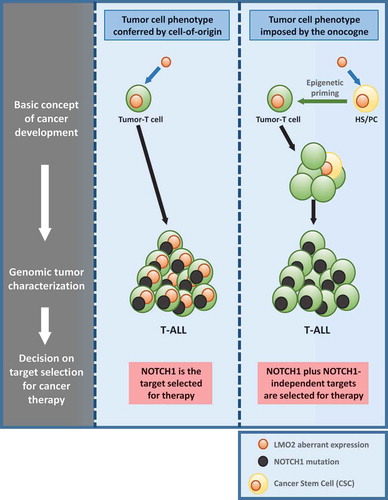Figures & data
Figure 1. Rationale for choosing therapeutic targets for T-ALL treatment.
Acquired NOTCH1 activating mutations are frequently present in T-ALL, so it seems to be an ideal therapeutic target to treat the sickness. But the recent deeply understanding of the generation and evolution of the disease is moving the focus for selecting therapeutic targets. We have recently shown that Lmo2 is able to primed hematopoietic stem/progenitor cells (HS/PCs) for T-cell malignancy and is not necessary anymore once the tumor-T cell identity is established. Secondary mutations like NOTCH1 are late events in leukemia evolution. In this sense, targeting NOTCH1 may not have the desirable therapeutic complete respond and we would need to add Notch1-independent targets for therapy. T-ALL: T-cell acute lymphoblastic leukemia.

